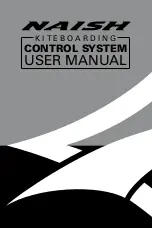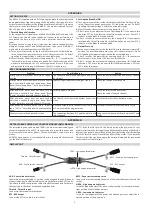
4
Normal flight
Brakes are released and speed sysem is not activated. In this mode, the FireStarter has the best
glide angle in the calm air.
To obtain a minimum sink rate pull the brakes in 10 – 15 cm.
Accelerated flight
When flying into strong wind and/or in a sinking air zone you can improve the glide angle of
your glider by activating speed system.
For acceleration, if is necessary , you need to activate the speed system by pushing speed bar
connected to the speed system on the risers.
The paraglider is less stable when flying accelerated. Consequently, the possibility of a collapse
is higher.
It is important to always remember that possible collapses in this mode of flight can occur more
dynamically than on trim speed flight.
Pilot should practice in this manouver gradually with enough hight over the ground, and be
careful using the speed system in turbulence.
Smart Progress has no trimmer system.
Maneuvering
For turning smoothly, begin to pull one brake, while simultaneously shift the weight of the body
in the suspension to the same side of the turn. The wing will smoothly enter the turn. When it
reaches the required turning radius, you can control this radius and the rate of descent by
changing the weight shifting and / or slight pulling of the external brake.
Maximum symmetric control travel at maximum weight in flight is about 70 cm.
Active piloting
For safe flights in turbulent air, it is strongly recommended to training actively in piloting.
The essence of this is the continuous maintenance of a constant load on the brakes and risers of
the paraglider.
Under the influence of a sufficiently strong turbulence when the pilot is inactive, the paraglider
swings in pitch and roll, which can lead to some collapses.
If the wing surges forward, brake it by pulling the brake until it returns from the position in front,
almost over the pilot's head. Operate the brakes with sufficient speed, but smoothly, considering
the inertia of the wing. Do not allow the oscillations to increase.
If the wing throws back on the pitch, start releasing the brakes. And when the wing returns to the
vertical, you must restore the previous tension to the brakes to prevent a dive forward.
In this way, a sufficiently experienced pilot can avoid collapses even in very turbulent air.
Nevertheless, it is important to remember that there is the potential for turbulence, which the
pilot can not deal with, so the most important safety is a wise assessment of his piloting skills
and given weather conditions.
Summary of Contents for FireStarter
Page 8: ...8 4 General view of the paraglider ...
Page 10: ...10 6 Lines diagram ...































